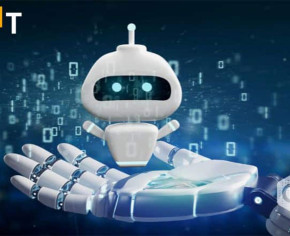
AI Trading Assistants: Unleashing Efficiency for Brokerages
The question is no longer are we using AI for efficiency, but rather, how are we using AI for efficiency.
The trading space is a particularly interesting arena to watch this transition unfold because software development companies had already been working on chatbots and similar automation tools, before the wave of large language models (LLMs). Meaning that with an already solid foundation, they have been able to build on this rapidly, and are rolling out advanced tools with remarkable capabilities.
According to ICOholder, the “integration of AI into quantitative trading strategies has enabled traders to uncover hidden patterns in financial data, refine predictions, and unlock profits that were previously elusive.”
Cue AI trading assistants.
What are AI Trading Assistants? AI trading assistants dramatically improve the trading experience. They combine two areas: Machine learning and financial analysis.
Machine learning (ML) is a core technology with the ability to learn from data.
We can think of ML as the Oz behind the curtain, allowing AI trading assistants to take financial analysis data and adapt and respond to it, with minimal human intervention.
‘’But, your average investment Joe can already do that’’. Great point. Here are the real distinguishing advantages of AI trading assistants in a nutshell:
They can analyze vast amounts of data at incredible speeds (much faster than humanly possible) to provide insights, predictions, and trading signals tailored to trader’s preferences. They can provide an automated ‘exceeded expectations’ level of customer service. Think response time, product knowledge, and multilingual capabilities. We’ll expand on this below.

